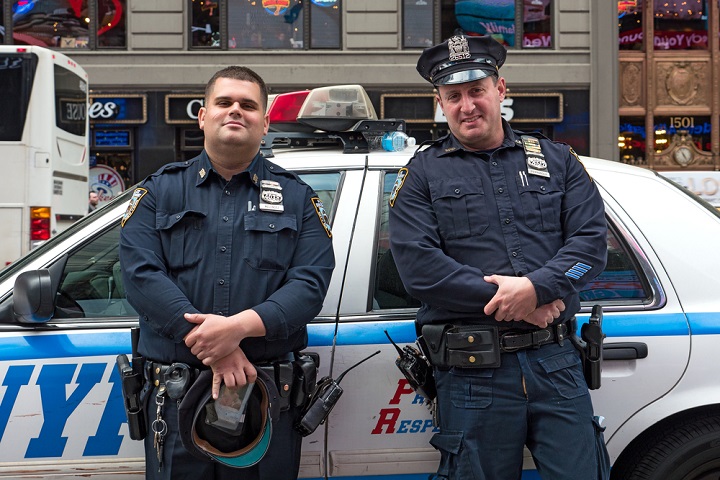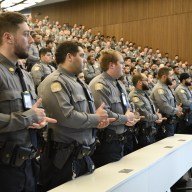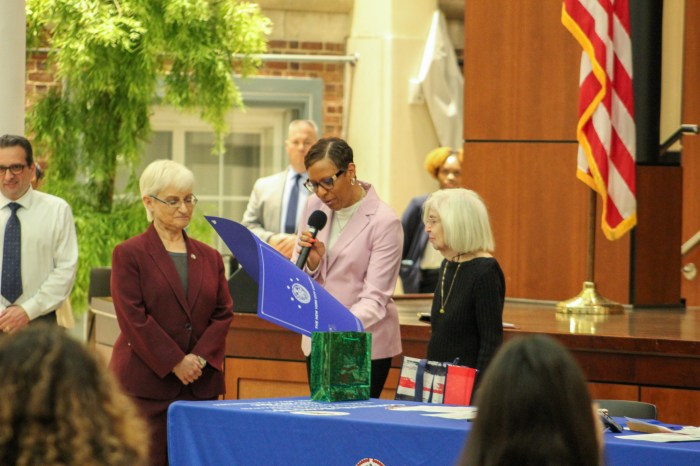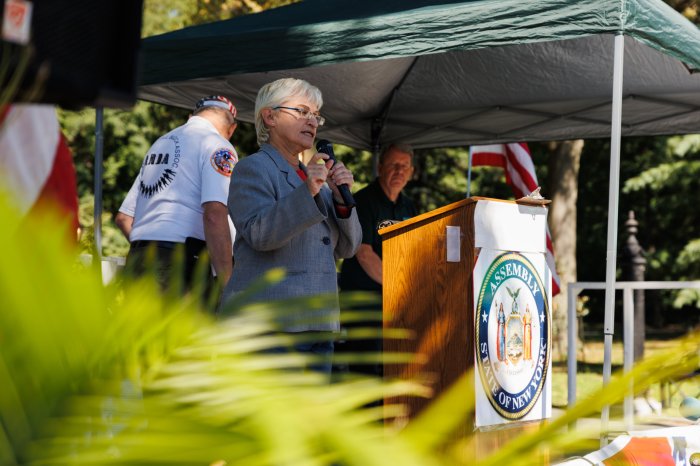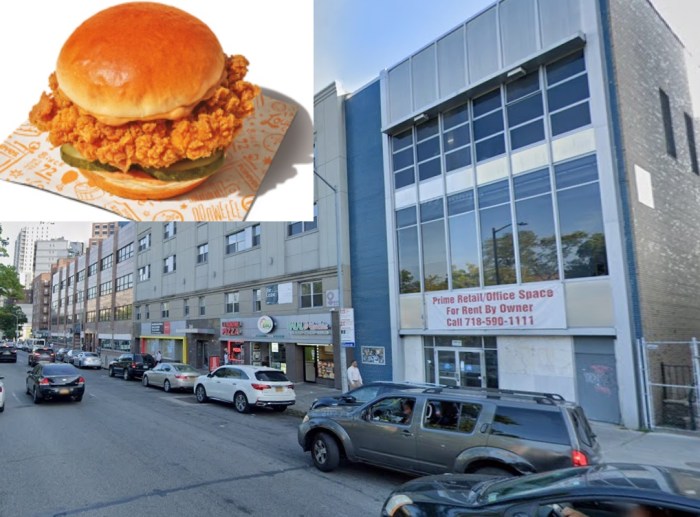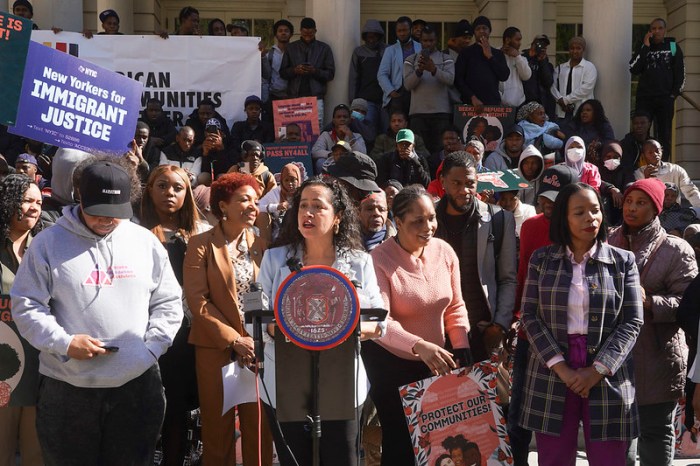Queens’ 102nd Precinct has seen an impressive drop in crime over the last year, thanks to the success of the commanding officer’s “predictive policing” method.
Officers from the 102nd Precinct patrol the neighborhoods of Kew Gardens, Richmond Hill East, Richmond Hill, Woodhaven, the northern part of Ozone Park and all of Forest Park, and have helped bring the areas’ crime numbers down over the last year.
“We’re looking at an astonishing decrease in crime,” said Deputy Inspector Deodat Urprasad, commanding officer of the 102nd Precinct. “We’re going from last year at this time we had 756 index crimes — murder, rape, robbery, assault, [burglaries], grand larceny, GLA’s (grand larceny auto). This year, we are at 588. In raw numbers, that’s a negative 168. We are at negative 22 percent.”
Citywide, the 102nd Precinct is fourth out of 77 precincts in crime reduction year-to-date, Urprasad said. Borough-wide, they are seventh in crime reduction year-to-date.
“What we’re doing, we are targeting specific areas within the precinct,” Urprasad explained.
This is what the commanding officer calls “predictive policing.”
An example of this would be focusing on Jamaica Avenue, a long commercial strip that has businesses, lots of cars, pedestrians, youths and shoppers. A heavily trafficked area like this can attract criminals. Urprasad has the same set of officers patrol Jamaica Avenue so they can get a feel for what is going on in the community and interact with the people and store owners.
“Instead of having the crime occurring there, I try to do predictive policing,” Urprasad said. “I know certain areas in the precinct are prone to robbery, I’ll have my officers go over there, park their car there and do a walk, on all the tours … I’ve been doing that more and more and I’m seeing results.”
Urprasad and Police Officer Edwin Martinez, the precinct’s community affairs officer, also touted the success of the new smartphones given to officers throughout the department.
Martinez told of a lady who was complaining about people smoking marijuana in Forest Park. He gave the woman one of the officer’s work cell phone numbers so she can reach out to the officer directly if there is any issue there again.
“The smartphone is great,” Martinez said. “Sometimes just the simple feature of having every cop with a cell phone [can help] … in the future if she sees or smells marijuana, or sees people using marijuana, smoking marijuana, smoking narcotics in that park, she can call up the officer directly and get an instant response.”
Not only do the smartphones allow officers to receive and send out information instantaneously, the technology provides them with crime patterns and trends, which helps them in their “predictive policing.”
The 102nd Precinct is looking to continue the “predictive policing” method, and seeing an even bigger decrease in crime, as they have added 32 new officers to the precinct over the last two years.

